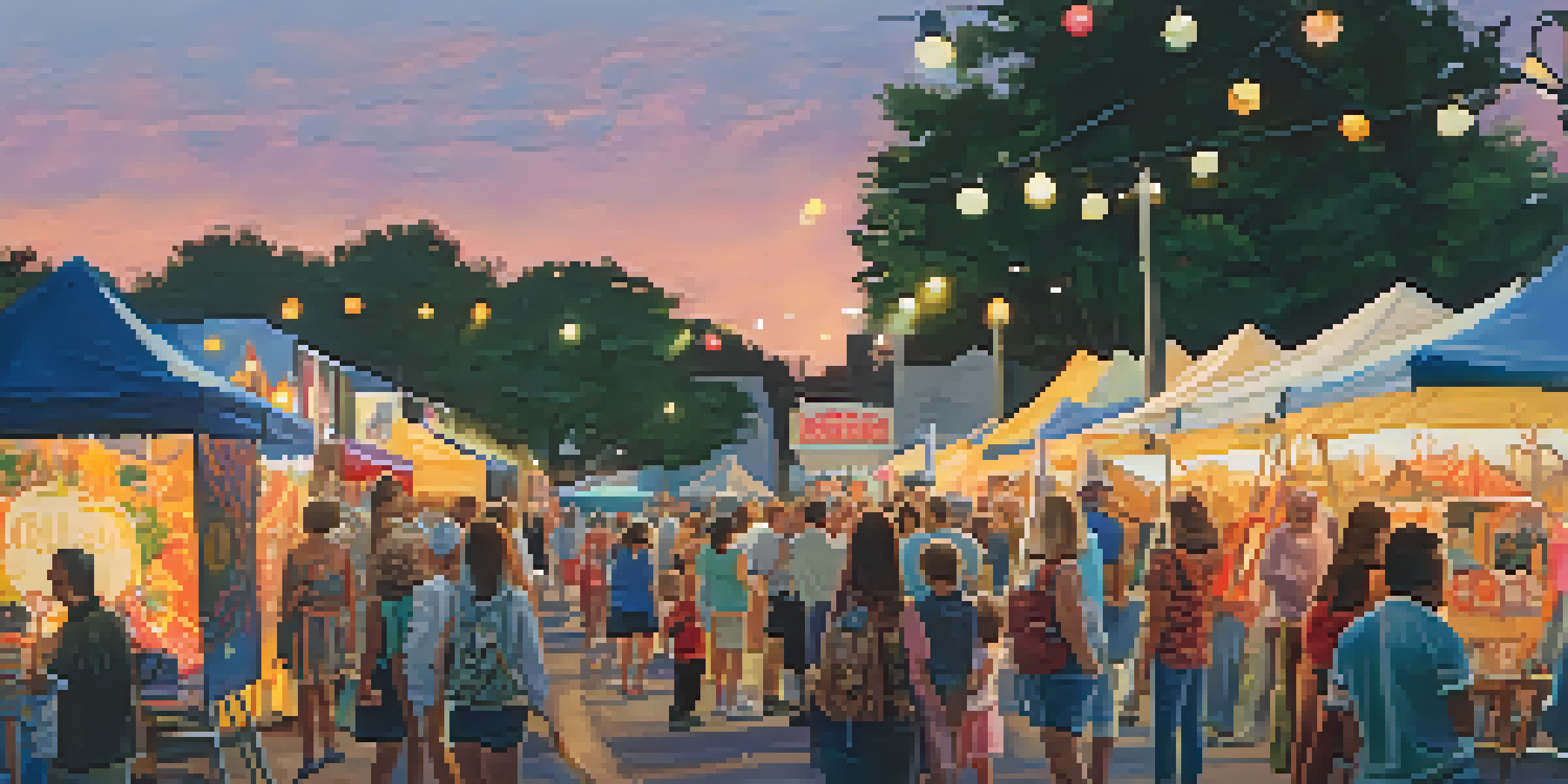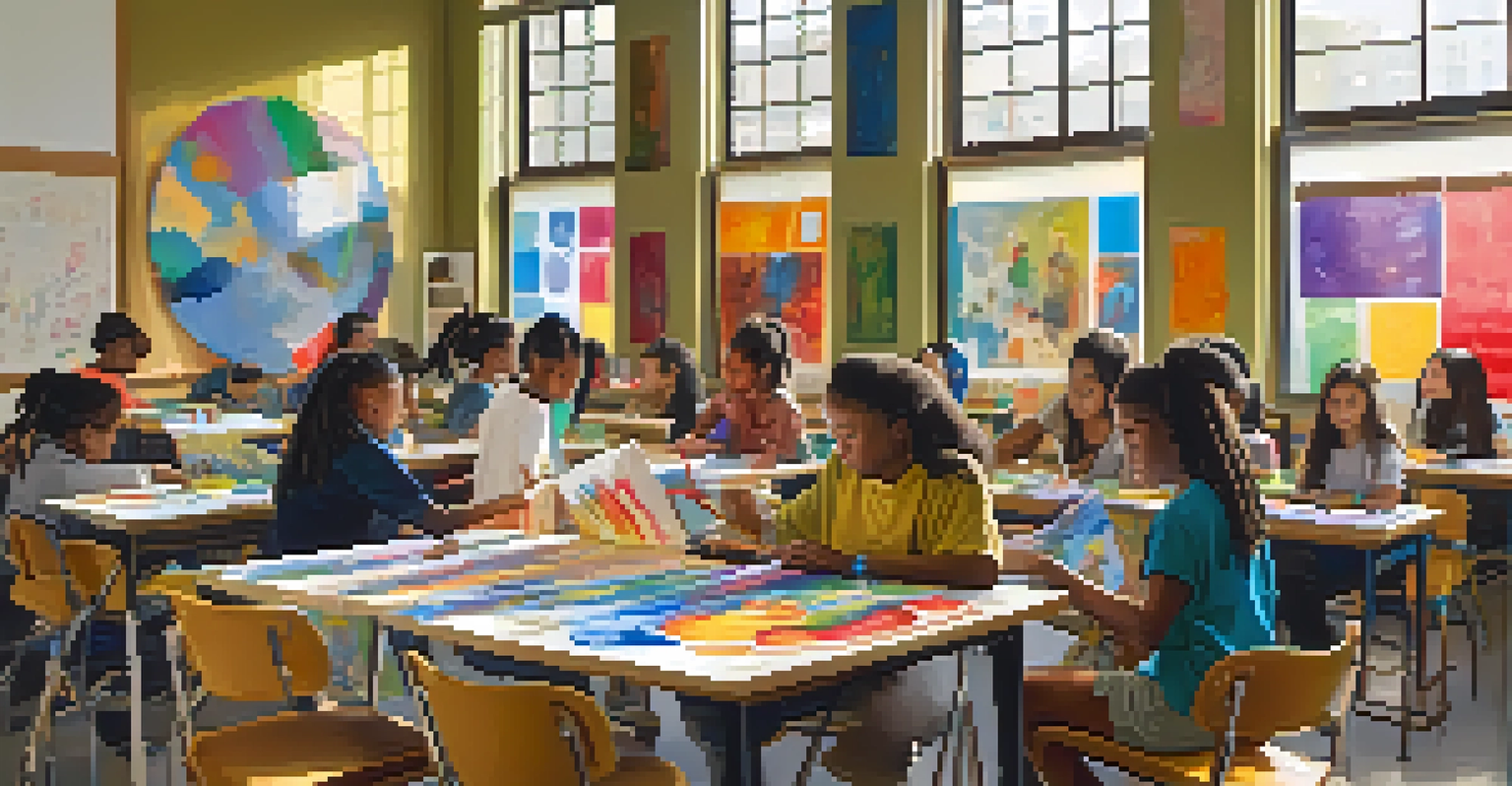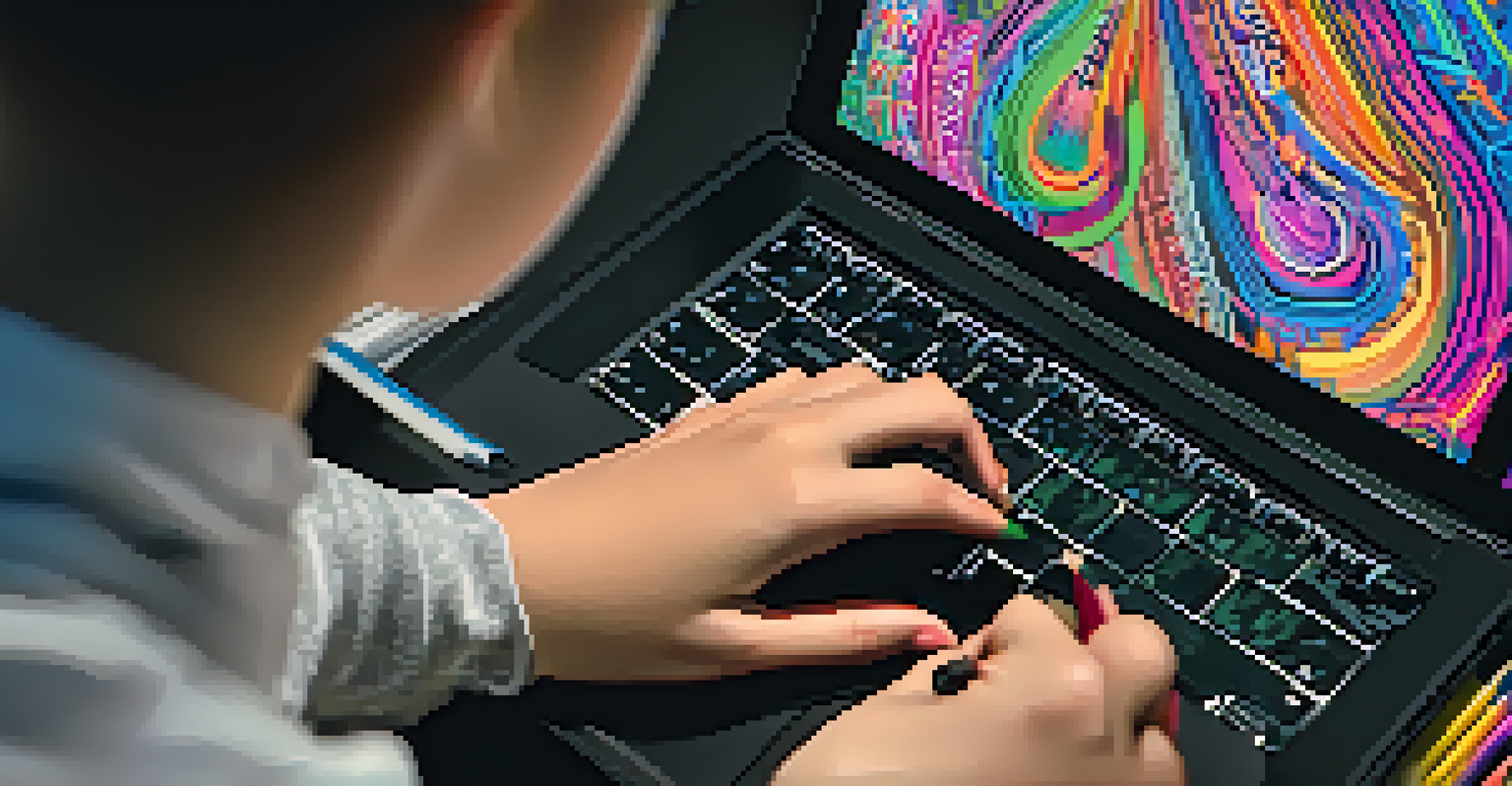Art Education in Memphis: Fostering the Next Generation

The Importance of Art Education in Memphis
Art education plays a vital role in shaping well-rounded individuals, especially in a vibrant city like Memphis. It encourages creativity, critical thinking, and emotional expression, which are essential skills in today's world. By integrating art into the curriculum, students not only learn about various artistic techniques but also develop their unique voices.
Every artist was first an amateur.
In Memphis, art education is not just an extracurricular activity; it is a key component of the overall educational experience. Schools and community programs recognize that exposure to the arts enhances cognitive abilities and social skills. For instance, students engaged in art projects often display improved focus and collaboration with peers.
Furthermore, Memphis has a rich cultural heritage that can be explored through art education. By studying local artists and historical movements, students gain a deeper appreciation for their community, fostering a sense of belonging and pride.
Local Programs Supporting Young Artists
Memphis is home to numerous programs dedicated to nurturing young artists. Organizations like the Art Museum of the University of Memphis and the Dixon Gallery and Gardens offer workshops and classes designed for various skill levels. These programs provide opportunities for hands-on learning, encouraging students to experiment and express their creativity.

In addition to formal education settings, community initiatives play a crucial role in art education. Local nonprofits often host events and exhibitions that showcase student work, giving young artists a platform to share their creations with the public. This exposure can be incredibly motivating and empowering for aspiring artists.
Art Education Enhances Skills
Integrating art into education fosters creativity, critical thinking, and emotional expression in students.
Moreover, collaboration between schools and local artists enriches the educational experience. Guest artists often lead workshops, providing students with insights into professional practices while inspiring them to pursue their passions.
Integrating Art Across the Curriculum
Integrating art into various subjects can enhance learning outcomes and engagement. By using art to teach concepts in science, history, or math, educators can make lessons more relatable and enjoyable. For example, creating sculptures can help students understand three-dimensional shapes while exploring geometry in a creative way.
Art enables us to find ourselves and lose ourselves at the same time.
This interdisciplinary approach not only reinforces academic content but also allows students to see the connections between different fields. It encourages them to think critically and creatively, skills that are increasingly important in the modern workforce. As a result, students become more adaptable and innovative thinkers.
Moreover, this method fosters a love for learning that extends beyond the classroom. When students see the relevance of art in their daily lives, they are more likely to engage with their education and pursue their interests passionately.
The Role of Technology in Art Education
In today's digital age, technology plays a significant role in art education. Tools like graphic design software and digital art platforms open up new avenues for creativity. Memphis educators are increasingly incorporating these technologies into their curricula, allowing students to explore modern artistic practices.
By using technology, students can create art that transcends traditional boundaries. They learn how to manipulate images, create animations, and even develop their own video projects. This not only enhances their artistic skills but also prepares them for careers in rapidly evolving industries.
Community Programs Support Artists
Local initiatives and partnerships provide young artists with valuable opportunities for hands-on learning and public exposure.
Additionally, online platforms provide access to a wealth of resources and inspiration. Students can participate in virtual workshops, connect with artists worldwide, and share their work in online galleries, broadening their horizons and networks.
Community Engagement and Art Education
Community engagement is essential for successful art education programs. In Memphis, partnerships between schools, local businesses, and cultural institutions create a rich ecosystem for young artists. These collaborations often result in community projects that allow students to contribute creatively while learning valuable skills.
Events like city art fairs and exhibitions not only celebrate student work but also foster a sense of community pride. When students see their art displayed publicly, it reinforces the value of their contributions and encourages them to continue pursuing their passions.
Moreover, community engagement instills a sense of responsibility and connection. By participating in projects that benefit their neighborhoods, students learn the importance of giving back, creating a cycle of creativity and community support.
Challenges Facing Art Education in Memphis
Despite the many benefits of art education, challenges remain. Funding cuts and budget constraints can limit resources available for art programs in schools. This often results in reduced class offerings or the elimination of art programs altogether, which can be disheartening for students and educators alike.
Additionally, there may be a lack of awareness regarding the importance of art in education. Some parents and policymakers might prioritize subjects like math and science, overlooking how art contributes to overall student development. Addressing this misconception is crucial for securing ongoing support for art initiatives.
Challenges Threaten Art Education
Funding cuts and misconceptions about art's importance pose significant challenges to maintaining robust art programs in Memphis schools.
However, grassroots efforts and advocacy can help bridge these gaps. By raising awareness and demonstrating the positive impact of art education, communities can work together to ensure that future generations have access to these vital opportunities.
The Future of Art Education in Memphis
Looking ahead, the future of art education in Memphis appears promising. With ongoing community support and innovative programming, there is potential for growth and expansion. By embracing new technologies and teaching methods, educators can continue to inspire the next generation of artists.
Moreover, as awareness of the importance of art education increases, more resources may become available. This could lead to enhanced programs, more partnerships, and greater opportunities for students to explore their creative passions.

Ultimately, investing in art education is an investment in the future of Memphis. By nurturing young artists today, the city ensures a vibrant, culturally rich tomorrow, fostering creativity that resonates far beyond the classroom walls.